13 best practices for increasing lead conversion rates
How are you qualifying and converting leads into customers? Do you have a solid process in place to qualify leads so that your sales reps can focus their time on the most sales-ready prospects? Are you converting enough leads that have been qualified by marketing? Lead conversion is at the heart of revenue growth and company expansion. By following the best practices below, you can increase your lead conversion rate and grow your business more sustainably.
1. Publish a blog

We all know that converting leads comes at the end of the sales cycle. But to get leads to the point where they are interested enough to buy your product, you first need to build trust. They need to see you as an authority in your space and trust that you can support them and ensure their success using your product or service.
Blogging is a great way to build that trust. According to Forbes:
“The fact is that in the world of today you cannot become an authority simply by declaring yourself as one. Customers are more suspicious, and they want to see you prove it. By producing quality information that’s true and reliable in every blog, you are making sure that you can become that authority.”
Prospects will be more likely to engage with you once you solidify yourself as an authority in their minds. This will lead to higher a lead conversion rate.
2. Integrate your CRM with a marketing automation platform
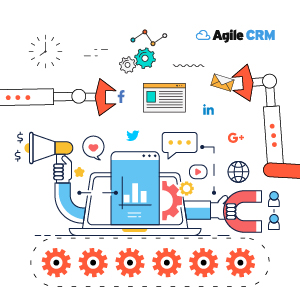
The vast majority of sales teams today use customer relationship management (CRM) software to move opportunities through the pipeline and close deals. A CRM stores loads of information about each lead in your system, including demographic and behavioral data.
When you use a marketing automation solution in tandem with your CRM, you can leverage all of that contact data to personalize and target the messages you send your prospects. This lets you present highly relevant messages to your leads rather than blasting a one-size-fits-all message to everyone in your lead database.
You can personalize based on their interests, past buying behavior, and more. This allows you deliver much more personal outreach, which will better engage prospects and increase the likelihood of conversion.
However, to achieve this, you must integrate your CRM and MA systems. This lets them share data in real time and deliver the most targeted and relevant messages possible. If you’re using two separate systems, make sure they are integrated. If you are using an all-in-one CRM—such as Agile CRM—you’ll have sales, marketing, and customer support automation. This means that integration is built into the system and there’s no need to integrate—your CRM and MA solutions are already integrated out of the box, on a single platform.
3. Set up lead scoring to qualify leads
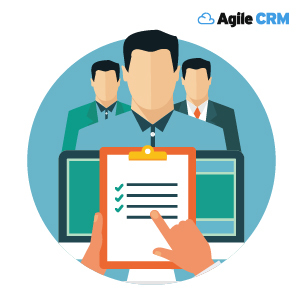
Lead scoring helps you identify the most sales-ready leads in your system. By using a point system that indicates the value that person represents to the organization, you can hone in on their sales-readiness.
You award points to leads for actions they take, like opening or clicking emails, visiting your website, etc. You also award points for demographic data such as their job title. Plus, you determine how many points each action or demographic attribute is worth.
Scores accumulate over time. You set a scoring threshold at which a lead is considered a “marketing qualified lead” (MQL). When they cross the threshold, they are passed over to sales for immediate follow up. This helps sales prioritize their outreach to the most sales-ready leads, so they don’t waste time on dead-end leads or leads that are not yet ready to discuss a purchase. Simply put, lead scoring improves the quality of your leads.
4. Include sales when developing your lead scoring process
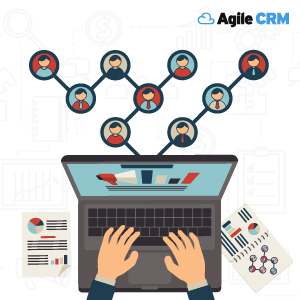
You want your lead scoring mechanism to be as precise as possible. It’s a key part of an effective lead conversion process. When you are setting up your lead scoring system, you should include sales in the process. It is a best practice for marketing to confer with sales to decide which actions warrant which score, and at which score a lead is considered to be marketing qualified.
Your sales reps are closer to prospects and know their needs and pain points better than marketers. Getting buy-in from sales not only helps finely tune your scoring system, but also tightness alignment between the two teams. Plus, it will help sales close more deals. A Kentico study found 38% of businesses experienced higher lead to opportunity conversion rates thanks to lead scoring.
5. Revisit and refine your lead scoring process often

It is highly advisable to reevaluate your scoring mechanism at least once per quarter by meeting with sales to gain consensus on whether leads are being qualified too soon or too late. In this way, marketers can continually hone in on the perfect recipe for lead qualification.
If you are passing lots of MQLs to sales, but they are converting very few of them, odds are you are qualifying too soon. In that case, you should increase your MQL threshold. Sales can be instrumental in helping to finely tune this process of lead conversion mapping.
6. Run lead nurturing and generation campaigns
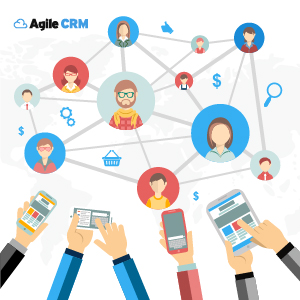
To convert leads, you must first generate leads. Lead generation can take many forms, from social media programs to email drip campaigns. Once you generate new leads, you need to nurture them through the pipeline with a series of touchpoints that move them closer to qualification.
Lead nurturing helps you identify sales-ready leads through lead scoring. Each action they take can be scored and moves the lead closer to conversion. Check out some lead nurturing best practices to learn more.
7. Set up killer landing pages

As you move leads through the pipeline, you need to have a way to capture more of their information and increase their engagement with your brand over time. One of the most effective ways to do this is by creating simple landing pages that have one objective: to encourage the lead to take a desired action. That could be downloading content, registering for a webinar, requesting a demo, etc.
The format, content, images, calls to action (CTAs), and other elements of your landing pages make a huge difference in how effective they are. If you are unsure how to approach landing page creation, check out some examples of killer landing pages from your peers.
8. Optimize your calls to action for lead conversion
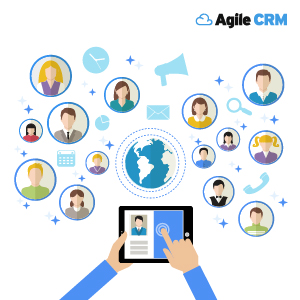
In the same way that a top-notch landing page can make or break your lead conversion ratio, so can the CTA you include on your landing page. For example, you want to make it painfully clear to the visitor which action you want them to take, how to take it, and what they will receive in exchange.
Variables like the color contrast between your page background and your CTA button, placement of your button on the page, etc. matter a great deal. If your visitor is not sure where to click or what they will receive in exchange for providing their personal information, your CTA won’t be effective. When done well, a great call to action can significantly increase your lead conversion rate.
9. Incorporate data verification
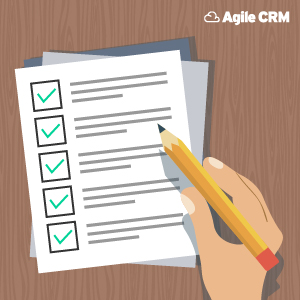
Typically, your landing pages will have a form to collect prospect information. However, many people will provide you with false information—like a fake email address— to receive your offer.
You can avoid this by including various types of data verification in your lead generation web forms. Many MA solutions include capabilities that can detect an invalid email address or phone number when someone is completing a form.
Plus, you can use reCAPTCHA to verify that the entity filling out your form is not a robot. This further reduces fake leads in your database and increases the ability of marketing to qualify high-quality leads so sales can take the baton and work toward converting them.
10. Share your content on social media

You can easily engage your known leads with email marketing and multichannel campaigns. This is because they are executed through your MA solution, which stores your leads’ information so you can reach them directly. But what about those leads out there whose contact data you do not have?
You can reach them on social media! When you create killer content, you can share it across all your social channels. Great content speaks for itself, and if it’s truly exceptional, people will share it. That will extend the reach of your brand and drive more new leads to click through to your website or blog.
Once they do that, the engagement has begun. Always include some type of offer in association with the content you share to capture the contact info of new leads. These will be leads who are genuinely interested in your product or service, which means they will be easier to qualify and convert into customers.
11. Use social monitoring to find brand advocates
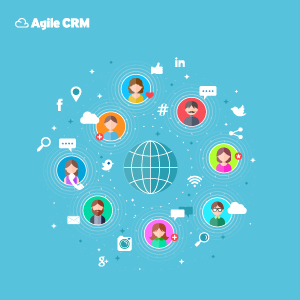
The practice of social listening and monitoring lets you instantly be alerted when someone mentions your brand on social media. With social CRM tools, this is quite easy. Notification alerts pop up when someone mentions you, giving you the chance to engage with them at the exact moment when they are already engaging with your company.
If you find people speaking positively about your product or service, reach out to them to show your appreciation. Start a dialogue with them. If they are very happy, you may ask if they want to be featured in a case study or an interview. Treat these people with respect and cater to them in any way possible, because these are potential brand advocates.
Brand advocates are super helpful in promoting your brand and helping to increase conversion rates. You hear a lot about influencers these days, but brand advocates can be even more influential. Consider these statistics from a Convince & Convert infographic:
- 92% of consumers trust recommendations from brand advocates. (Nielsen)
- Only 18% of consumers trust recommendations from industry influencers. (Forrester Research)
12. Enable sales to rapidly follow up on qualified leads
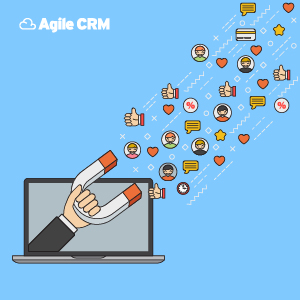
Once a lead is qualified, it needs to be pushed over to sales for immediate follow up. The longer sales waits to reach out to a qualified lead, the lower the chances of conversion will be. According to InsideSales, “Your odds of reaching a new sales lead drop over 10 times if you wait longer than the first hour of shown interest, and the odds of [sales] qualifying that lead decrease six times after the first 60 minutes.”
With a powerful CRM in place, you can automate the routing of real-time alerts to reps the second a new lead becomes qualified. A task can be automatically created with reminders to ensure the rep does not let the MQL fall through the cracks. The faster the outreach, the higher your chances of lead conversion.
13. Measure your lead conversion ratio on a routine basis
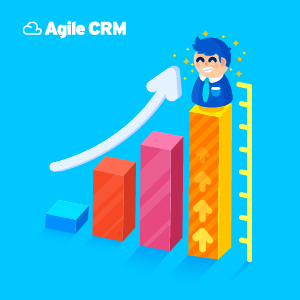
Measuring your lead conversion ratio helps you keep a finger on the pulse of your efforts. Essentially, this is the ratio of the number of MQLs that convert into customers. If sales is only converting five of every 100 leads you qualify, that is an indication that you may be qualifying them too soon.
Keep a running monthly scorecard that tracks this metric, so you can maintain insight into how well your lead scoring process is working. It’s always prudent to track and analyze metrics so that you can make data-driven decisions for the future. Doing so helps you identify what’s working and what’s broken, so you can fix the broken parts and focus more energy on tactics that are producing results.
Key takeaways
Lead conversion is the bread and butter of your business. It is what brings dollars into the coffers and allows you to grow your business. However, it doesn’t happen on its own; it takes careful planning and execution of various tactics to increase conversion rates.
Putting yourself in the shoes of your leads is important. What would engage you enough to complete a lead form? What actions taken by a company would put you off and force you to unsubscribe? Be empathetic to what leads need in order to engage with your brand.
Then, follow the steps above. Using an MA and CRM solution in tandem will help you automate and streamline your efforts. This will allow you to reach more leads with highly targeted messaging that engages them like never before. When engagement levels increase, conversion rates climb, and revenue grows.
Do you have any tips for increasing your lead conversion rate? Let us know in the comments section below!
2 Comments
Marketing Digital BH
about 7 years agoGABRIEL, Congratulations, I always felt that my pipeline and automation process needed a few touches and I got to see everything here. Do you have an automation template for someone who is requesting a website creation budget, for example?
ReplyGabriel Swain
about 7 years agoThanks for the positive feedback. Glad the article helped fill a few gaps. Can you be a little more specific on what you're looking for re: a template for automating website creation?
Reply